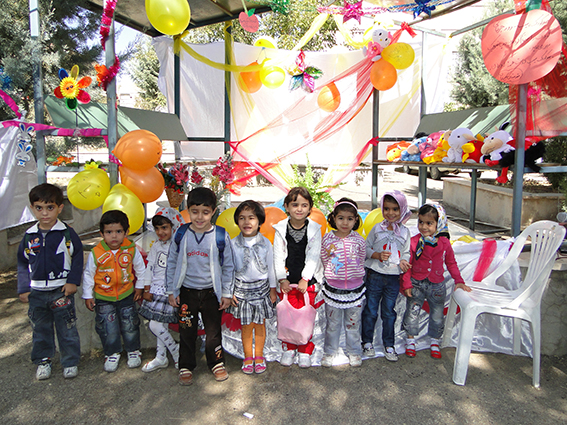Preschool education of children in deprived regions has increased by nearly 30% in the past four years according to an official at the Education Ministry.
Rokhsareh Fazli, director of the ministry’s Preschool Education Office, said the number of underprivileged children in preschools has almost doubled from 500,000 in 2013 to 900,000 at present.
“The coverage which was 38% earlier has now reached around 67%,” she was quoted as saying by ILNA.
Early education for nomadic children has also seen significant growth.
Based on a directive from the High Council for Education, preschool learning must be offered to nomadic children free of charge.
“This year, with enhanced government support, nomadic children in the preschool age, have been brought under the fold of free education nationwide,” said Fazli.
In the current academic year that started in September 2016, over 13,700 nomadic children were given free education. The number shows a 51% increase compared to the 2013-2014 school year when 7,000 such students were receiving free education in preschools.
Around 9,000 children benefited in 2015-2016, from 8,000 in the preceding year.
Fazli said providing nomadic children across the country with free preschool education, is a step towards educational justice.
“The government is pushing educational programs in disadvantaged areas and draws on public support when possible,” she was quoted as saying.
Language and cultural diversity in Iran often pose a challenge since the medium of instruction is Farsi, the official language.
Although Farsi is the most widely-spoken language in Iran, there are regions in 14 of the 31 provinces where locals speak a different language such as Arabic, Kurdish, Baluchi and Turkish, as well as other Farsi dialects.
Studies show that the rate of failing school grades is more in the bilingual regions. To prepare children from bilingual backgrounds for formal education, a $13 million (500 billion rials) plan was proposed by the Education Ministry to cover around 150,000 students in the 14 provinces with a one-year preparatory program in both the mother tongue as well as Farsi, free-of-charge, as of the current academic year.
“Preschool programs focus on learning the mother tongue as well as gradually introducing and embracing the official language and nurturing a sense of national identity in children,” said Fazli.
Preschool courses are not designed uniformly for the whole country and provincial authorities are responsible to develop appropriate programs in accordance with regional culture.
“We do not intend to replace the mother tongue with Farsi, but want children to know their language and learn their culture and folk stories and poems in their own language or dialect while learning Farsi fluently to prepare for formal education,” she said.
Research shows that children who participate in quality preschool programs have better health, social-emotional and cognitive outcomes than those who don’t. The gains are particularly influential for children from low-income families and those at risk of academic failure.


